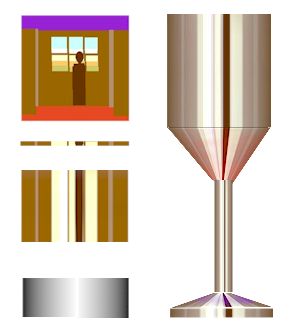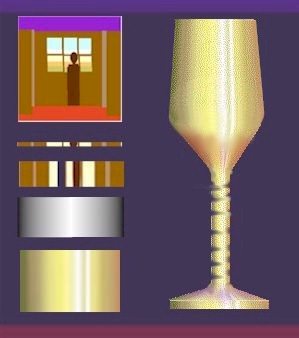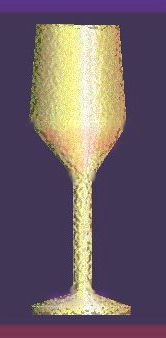'Give me some paint, brushes and canvas and I will give you gold, silver, ruby and pearl. I will give you the greatest treasures you have ever seen. I will show you magic. Artists are the greatest alchemists, the best magicians of all. They can make gold from base metals, they do that every day and more. Would anyone doubt the cost of Rembrant's painting below well exceeds the cost of the gold helmet? Oil and lead to gold ... now there is alchemy proven.

|
In painting metals the key is to understand they are distinguished by their color and their ability to reflect light rays. Apart from chrome and stainless steel all metals oxidise to some degree - alloys usually more than the others. The highest reflective metal with the least hue is, in descending order; chrome, aluminimum, gold silver, brass copper, bronze and lead
Some will say this depends on the shine, and it does but our purpose is to differentiate holding all things ideal. The practical method of explaining the degree of polish or reflective mature of the metal is to decide on the focus (sharpness) of the items it reflects. A mirror for instance will reflect exactly what surrounds it - unless it is a concave mirror which reflects the surrounding items otherwise . used in interrogation techniques - very disorientating, I confess.
|

|
In my studio there exists a metal cup (an old sporting trophy - don't know why I kept it?). It is made of some alloy of pewter and tin that gives the impression it is silver. I will use this as my basic object to demonstrate the essential considerations when painting metals. I will also use the same artificial room I used to create 'the pearl'. The cup is drawn here in its most neutral form but with shading to indicate its shape. The manipulation of its environment that will largely determine its final presence. |

|
|
CHROME
|
|
Technical Analysis:
Chrome is merely a metal that has almost the identical reflective qualities as a mirror. It absorbs little or no color from the visible spectrum.
|
|
Conceptual Analysis:
As opposed to a flat mirror chrome is usually found on motorcycle or car parts where it coats steel. Parts are usually cylindrical, spherical or conical. Hard edged, modern, hospital, antiseptic, cold. |
|
Presentation Technique:
The most effective presentation is usually to render colors into their grey scale values and over-emphasise reflected areas of lights and darks. See below.
|
|
STEPS
1.Take a panoramic view of the room including the light source and some good gradations of light and dark
2.Expand this band to form a rectangle of whatever shape you desire.
3.Shade the edges to form a cylinder, cone or sphere if needed.
4.These become the basic objects that will comprise the finished article.
NOTE : The room is reflected left to right instead of the reverse. The ceiling (blue) is reflected on the upward facing surface of the base while the downward surface reflects the floor.

|
GOLD
Technical Analysis:
texture- hard edge and thin turning line color - yellow, top end values close together reflective index - can be extreme if polished - but will totally absorb purple in highlights.shape - all composition - the most malleable of metals. One ounce can be spread over 10 sq.meters without molecular separation.Can be made into thread and interwoven with cloth.
Conceptual analysis:
ideal - shinny, dull, satin, expensive, wealth, jewellery, worked and infinitely fashioned, highlights, edging, consider purity of color emerging from dirt..
Presentation technique:
best background - dark best lighting - side color - green to orange with highlights pure yellow and white. |

|
Gold has many interesting and varied colors and here are some and this is without the colors.reflected when the surface is highly polished. In the example above (light gold) I altered the reflected highlight somewhat to emphasise the dull glowing characteristics. |

|
STEPS
1.Take a slice from the room including the light source and some good gradations of light and dark
2.Expand this band to form a rectangle of whatever shape you desire.
3.Substitute the bands for combinations of any of the colors shown above but trying to keep the greens and browns away from the final highlights. Remember gold will usually absorb all purple hues and reflect everything else. A flesh hue somewhere usually indicated an observer.
4.Shade the edges to form a cylinder, cone or sphere if needed and blur or scrumble all edges. 5.Sharpen the outside edges in strategic places against the background.
STUDENT ACTIVITY:For this page and the next - find your own cylindrical object (cup) and paint it as chrome, gold, silver and copper. Allow 80min.
GO TO ...Silver and copper
... or lesson list
|
|